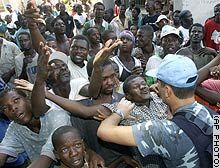 I saw a TV news report on the devastating floods in Haiti this past week. Over 1500 people have died and as many are still missing from the floods left behind by hurricane Jeanne. The news report showed images of relief workers throwing small bags of rice from the back of a truck into a chaotic sea of people, arms stretched out in despair and fear of starvation. As these bags of rice fell into the crowd, people fought over them, trying to rip the white bags from the arms of desperate women and men searching for food to feed their children. I stared at this image and had a sickening feeling—“I’ve seen something like this before.”
I saw a TV news report on the devastating floods in Haiti this past week. Over 1500 people have died and as many are still missing from the floods left behind by hurricane Jeanne. The news report showed images of relief workers throwing small bags of rice from the back of a truck into a chaotic sea of people, arms stretched out in despair and fear of starvation. As these bags of rice fell into the crowd, people fought over them, trying to rip the white bags from the arms of desperate women and men searching for food to feed their children. I stared at this image and had a sickening feeling—“I’ve seen something like this before.”  Then the irony hit me. A few weeks ago I saw a similar mob scene on TV, arms frantically waving, people shoving and pushing each other. But this time, the small white bag was a baseball and the frenzy was over who would lay claim to Barry Bonds’ #700 homerun ball.
Then the irony hit me. A few weeks ago I saw a similar mob scene on TV, arms frantically waving, people shoving and pushing each other. But this time, the small white bag was a baseball and the frenzy was over who would lay claim to Barry Bonds’ #700 homerun ball.Strange how we can fight over things that seem so important to us when on the other side of the country, people are fighting just to survive.
Sunday Eucharist shows us the things that are worth struggling for—welcome and respect for all people, unity and solidarity with the poor and the least, care for each other, remembrance of our past, hope for the future, food for everyone. Eucharist is where we practice unconditional welcome, respect, care, and love for all people and all life. In this way, we experience the reign of God—where every tear will be wiped away—and thus are sent to be the reign of God for those for whom a bag of rice is worth more than any baseball.
Last week, I joined in prayer with Judy Swazey, the liturgist at St. Martin of Tours, to celebrate with her family and friends the funeral Mass of her mother, Betty Frances Flyger. Throughout the liturgy, Judy’s consistent care for life and for all creation was evident in the way she greeted every person, in how the environment expressed the simple and genuine beauty of nature, in how the presider, their pastor Fr. Jack Bonsor, gently guided visitors and those unfamiliar with the Catholic liturgy through the actions of the ritual, in how the lector was chosen not just for her relationship with the family but for her ability to proclaim the Word of God with power, comfort, and strength, and in how the music was familiar to all so that the sound of the singing assembly could embrace those who were silent with grief.
After the opening prayer of the Mass and all were seated, Judy shared some words of reflection and eulogy about her mother. She described how she had seen her mother throughout her life live the Catholic call to care and respect for all creation. For me, Judy herself, through the committed and gentle care-giving she had shown her mother during her long illness, is an icon of that respect for life. After her reflection, a projection screen accompanied by soft instrumental music by the pianist showed pictures of Betty’s life. Then after a brief silence, the lector proclaimed the first reading. (There was no eulogy after Communion which allowed the ritual to flow smoothly from our sharing at the table to our farewell and leave-taking of our sister Betty.)
In this week’s DSJ Liturgy Notes, you’ll find:
- Liturgical Coordinators Gathering – October 6
- Have You Celebrated the Rite of Acceptance Yet?
- 3 More Simple Things You Can Do This Sunday to Improve your Liturgy
- Liturgists and Clergy Study Day with Fr. Ed Foley – November 5
- Cantor Workshop – October 21
- A Retreat for Initiation Ministers – October 23
- Respect Life Month: Life and Dignity of the Human Person
- Sample Intercessions for October 3, 2004
This week let us struggle for the things that truly matter and reverence Christ who lives in every human being.
Diana Macalintal
Associate for Liturgy
FILED UNDER: OPENING ARTICLES
 You are never alone when you work as a liturgist. If you coordinate the liturgy, you are invited to gather with others who know your joys and hopes, your fears and tribulations, your long hours for the sheer love of it all.
You are never alone when you work as a liturgist. If you coordinate the liturgy, you are invited to gather with others who know your joys and hopes, your fears and tribulations, your long hours for the sheer love of it all. If you haven't yet celebrated the Rite of Acceptance with your would-be catechumens, you're technically already too late to consider baptizing them next Easter. Easter is very early next year--March 27, 2005. This means Lent and the Rite of Election are early too--1st Sunday of Lent is February 13, 2005.
If you haven't yet celebrated the Rite of Acceptance with your would-be catechumens, you're technically already too late to consider baptizing them next Easter. Easter is very early next year--March 27, 2005. This means Lent and the Rite of Election are early too--1st Sunday of Lent is February 13, 2005.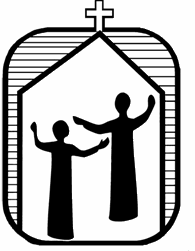 Give your Initiation teams an early Christmas present. Villa Holy Names is offering a retreat day for ministers of initiation on October 23, 2004, 9a to 4p. This is an opportunity for parish teams working with the RCIA process to gather for spiritual renewal and mutual support. Practical ideas for implementing the Rite will be presented by members of
Give your Initiation teams an early Christmas present. Villa Holy Names is offering a retreat day for ministers of initiation on October 23, 2004, 9a to 4p. This is an opportunity for parish teams working with the RCIA process to gather for spiritual renewal and mutual support. Practical ideas for implementing the Rite will be presented by members of 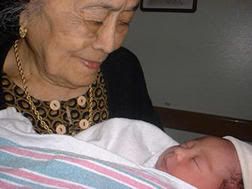 October is traditionally a time to reflect on issues of life and the dignity of all human beings at all stages and circumstances of life. As liturgists, we have a responsibility to be attentive to these issues while at the same time respecting the liturgical calendar. A good liturgical principle to keep in mind is trust the liturgical calendar and the liturgy to speak to the issues that face the church today. Tacking things and issues onto the Sunday Mass without working to integrate them into the Lectionary cycle and the primary issue of every Mass—the Paschal Mystery—only makes for a disjointed ritual. With this in mind, read what the Church teaches about these life issues and begin with the readings of the October Sundays to see how those scripture passages, as well as the ritual actions and symbols of the Mass, challenge all the baptized to respect life.
October is traditionally a time to reflect on issues of life and the dignity of all human beings at all stages and circumstances of life. As liturgists, we have a responsibility to be attentive to these issues while at the same time respecting the liturgical calendar. A good liturgical principle to keep in mind is trust the liturgical calendar and the liturgy to speak to the issues that face the church today. Tacking things and issues onto the Sunday Mass without working to integrate them into the Lectionary cycle and the primary issue of every Mass—the Paschal Mystery—only makes for a disjointed ritual. With this in mind, read what the Church teaches about these life issues and begin with the readings of the October Sundays to see how those scripture passages, as well as the ritual actions and symbols of the Mass, challenge all the baptized to respect life.
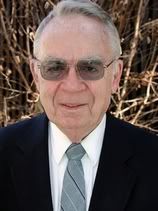 Last Monday, one of our Church’s best took his place with the circle of saints.
Last Monday, one of our Church’s best took his place with the circle of saints.  One important liturgical principle to remember is that the liturgy always speaks and teaches something. Ask any 5-year old. She will tell you what the liturgy taught her. For example, the liturgy is saying something when only the priest drinks from the cup and the assembly is given only the hosts. It teaches something if all the liturgical ministers are of one gender or one ethnicity or one age group.
One important liturgical principle to remember is that the liturgy always speaks and teaches something. Ask any 5-year old. She will tell you what the liturgy taught her. For example, the liturgy is saying something when only the priest drinks from the cup and the assembly is given only the hosts. It teaches something if all the liturgical ministers are of one gender or one ethnicity or one age group.
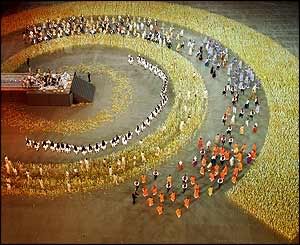 Do you remember the closing ceremonies of this year’s Olympics? The stadium floor was transformed into a field of wheat, and running down the middle was a long table. As the wheat was harvested, a colorful group of people, young and old, began setting the table. They flung brightly colored cloths over it and passed baskets and plates filled with food up and down the length of the table, making sure everyone could easily be fed. Then they invited the harvesters, carrying sheaves of wheat, to join them. Soon, tourists from every nation found their way to the feast, and all ate their fill as they recounted stories of hardship and abundance, war and peace, darkness and light. Later that night, athletes from every corner of the earth surrounded that table, draping the entire stadium with their brightly colored flags, sharing their own stories of triumph and defeat, and each carrying a stalk of wheat—a reminder of the feast they had shared with the world during the last 16 days.
Do you remember the closing ceremonies of this year’s Olympics? The stadium floor was transformed into a field of wheat, and running down the middle was a long table. As the wheat was harvested, a colorful group of people, young and old, began setting the table. They flung brightly colored cloths over it and passed baskets and plates filled with food up and down the length of the table, making sure everyone could easily be fed. Then they invited the harvesters, carrying sheaves of wheat, to join them. Soon, tourists from every nation found their way to the feast, and all ate their fill as they recounted stories of hardship and abundance, war and peace, darkness and light. Later that night, athletes from every corner of the earth surrounded that table, draping the entire stadium with their brightly colored flags, sharing their own stories of triumph and defeat, and each carrying a stalk of wheat—a reminder of the feast they had shared with the world during the last 16 days.
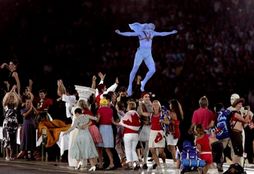 I watched these ceremonies that night, and as the banquet grew and the sense of feasting engulfed the entire stadium, I yelled out to my TV, “Now that’s Eucharist!” That sense of joy and hope even amid strife and fear, the care for the land and gratitude for its riches, the welcome of strangers and nourishment of both body and spirit, the genuine feeling of community regardless of skin color, gender, age, or accomplishment, the infectious desire to share what was happening with everyone else in that stadium and across the globe—shouldn’t our Sunday Mass do the same thing? For 16 days, a community of people, each struggling “to finish the race and wear the crown” inspired children and adults watching at home to reach for a goal, no matter how impossible it might seem. Doesn’t our Eucharist send us out to do the same? Go, be light for the world and salt for the earth. Go, just as I have done, so you must do. Go, love and serve the Lord.
I watched these ceremonies that night, and as the banquet grew and the sense of feasting engulfed the entire stadium, I yelled out to my TV, “Now that’s Eucharist!” That sense of joy and hope even amid strife and fear, the care for the land and gratitude for its riches, the welcome of strangers and nourishment of both body and spirit, the genuine feeling of community regardless of skin color, gender, age, or accomplishment, the infectious desire to share what was happening with everyone else in that stadium and across the globe—shouldn’t our Sunday Mass do the same thing? For 16 days, a community of people, each struggling “to finish the race and wear the crown” inspired children and adults watching at home to reach for a goal, no matter how impossible it might seem. Doesn’t our Eucharist send us out to do the same? Go, be light for the world and salt for the earth. Go, just as I have done, so you must do. Go, love and serve the Lord.
 Some might say that politics has no place in liturgy. Of course, the liturgy is not the place for campaign speeches, nor will the Catholic Church ever endorse one party over another. Yet, if the liturgy is not political—that is, if it does not influence our political life—then it is as if we are simply fulfilling rubrics rather than living out what Mass teaches us to do.
Some might say that politics has no place in liturgy. Of course, the liturgy is not the place for campaign speeches, nor will the Catholic Church ever endorse one party over another. Yet, if the liturgy is not political—that is, if it does not influence our political life—then it is as if we are simply fulfilling rubrics rather than living out what Mass teaches us to do.
 Watch an artistic cook in the kitchen. She brings together the freshest vegetables and herbs, the choicest meats, the finest spices, mixes them with friends and strangers, hungry of belly and heart, and with her skill she creates a feast. Out of her labor, time, money and love, she gives nourishment for body and soul. Yet it was God who began her work by giving her the seed and the soil, the sun and the rain, her skill and art, the earth and life itself, and a heart full of love. Here, the work of divine goodness and the work of human hands co-operate to feed the body and to bond companions together.
Watch an artistic cook in the kitchen. She brings together the freshest vegetables and herbs, the choicest meats, the finest spices, mixes them with friends and strangers, hungry of belly and heart, and with her skill she creates a feast. Out of her labor, time, money and love, she gives nourishment for body and soul. Yet it was God who began her work by giving her the seed and the soil, the sun and the rain, her skill and art, the earth and life itself, and a heart full of love. Here, the work of divine goodness and the work of human hands co-operate to feed the body and to bond companions together.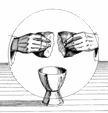 There’s a huge difference between Eucharist and Communion. Eucharist, in its best sense, is an action we do and a means of becoming more than ourselves, while Communion, in its most limited sense, is something we get that we use for our own. At our best, we move outward from Eucharist to love and serve the Lord whom we see most clearly in the poor and outcast; at our worst, we isolate ourselves from the distractions of that world in order to commune with the Lord we cannot see.
There’s a huge difference between Eucharist and Communion. Eucharist, in its best sense, is an action we do and a means of becoming more than ourselves, while Communion, in its most limited sense, is something we get that we use for our own. At our best, we move outward from Eucharist to love and serve the Lord whom we see most clearly in the poor and outcast; at our worst, we isolate ourselves from the distractions of that world in order to commune with the Lord we cannot see.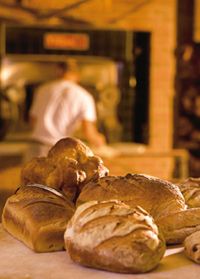 From the beginning of our Church, bread and wine have been brought forward by the people for the celebration of the Eucharist. In apostolic times, these gatherings took place in homes and privately-owned meeting rooms, and this presentation of gifts was a simple gesture of placing the bread and wine that would be blessed and shared at the altar. By the 3rd century, deacons assisted by collecting these gifts from the assembly who came forward bringing home-baked bread and flasks of wine. The deacons took some of the bread and wine to the altar. The rest they distributed to the poor who often lingered in the gathering areas of the church throughout the week. As this rite developed, other gifts for the poor and for the work of the church, such as candles, wheat, and grapes, were presented by the assembly.
From the beginning of our Church, bread and wine have been brought forward by the people for the celebration of the Eucharist. In apostolic times, these gatherings took place in homes and privately-owned meeting rooms, and this presentation of gifts was a simple gesture of placing the bread and wine that would be blessed and shared at the altar. By the 3rd century, deacons assisted by collecting these gifts from the assembly who came forward bringing home-baked bread and flasks of wine. The deacons took some of the bread and wine to the altar. The rest they distributed to the poor who often lingered in the gathering areas of the church throughout the week. As this rite developed, other gifts for the poor and for the work of the church, such as candles, wheat, and grapes, were presented by the assembly.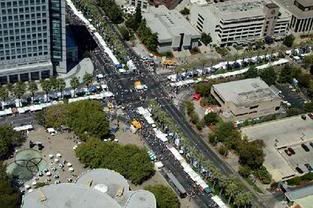 This Labor Day weekend, I went to the
This Labor Day weekend, I went to the  Don't forget about these local workshops and events. Feed your mind with some continuing formation and fellowship for you and your liturgical ministers.
Don't forget about these local workshops and events. Feed your mind with some continuing formation and fellowship for you and your liturgical ministers.
 The General Intercessions, also called the Prayer of the Faithful, have been part of the Christian liturgy since the early church. Their origins likely come from Jewish synagogue prayer. In the first few centuries of the church, the Sunday liturgy was divided into two parts: the Mass of the Catechumens and the Mass of the Faithful. In the first part, the catechumens (those preparing to be baptized) with the faithful (those already baptized) listened to readings from scripture. The bishop (the normative presider) then instructed the catechumens on those readings and the rites they were to celebrate. Then, the catechumens were dismissed from the liturgy, because only those who were baptized could celebrate the Mass of the Faithful. This second part of the liturgy began with the Prayers of the Faithful.
The General Intercessions, also called the Prayer of the Faithful, have been part of the Christian liturgy since the early church. Their origins likely come from Jewish synagogue prayer. In the first few centuries of the church, the Sunday liturgy was divided into two parts: the Mass of the Catechumens and the Mass of the Faithful. In the first part, the catechumens (those preparing to be baptized) with the faithful (those already baptized) listened to readings from scripture. The bishop (the normative presider) then instructed the catechumens on those readings and the rites they were to celebrate. Then, the catechumens were dismissed from the liturgy, because only those who were baptized could celebrate the Mass of the Faithful. This second part of the liturgy began with the Prayers of the Faithful. There's a new retreat center in town, and it's right in the heart of downtown Los Gatos!
There's a new retreat center in town, and it's right in the heart of downtown Los Gatos!